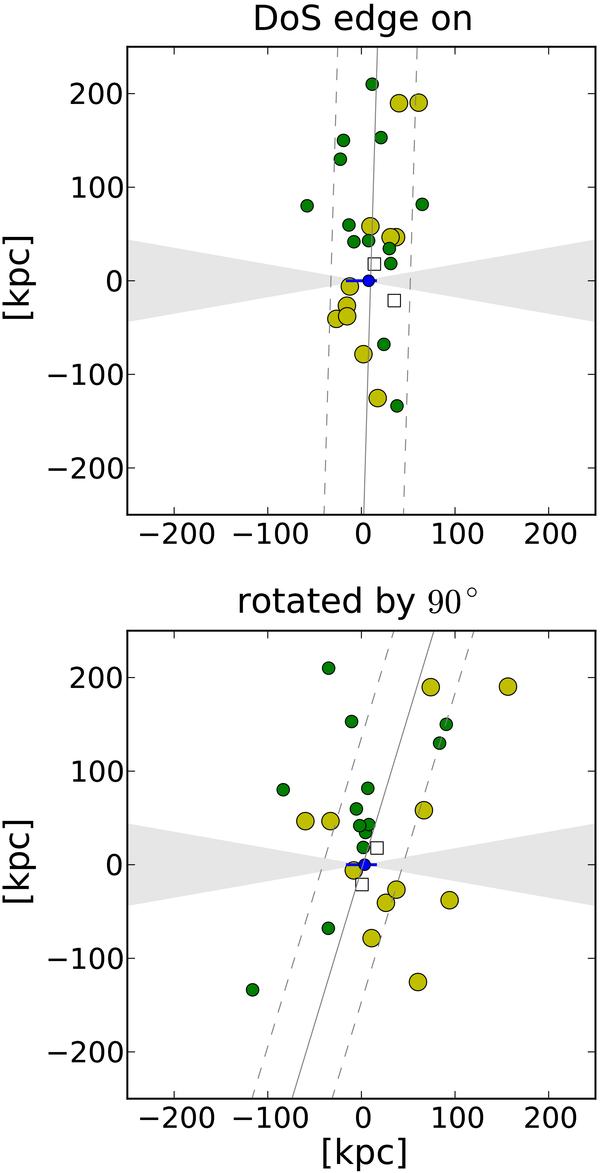Fig. 4

Parameters of the MW DoS: the 3-D distribution of the MW satellite galaxies. The 11 classical satellites are shown as large (yellow) circles, the 13 new satellites are represented by the smaller (green) dots, whereby Pisces I and II are the two southern dots. The two open squares near the MW are Seg 1 and 2; they are not included in the fit because they appear to be diffuse star clusters nearby the MW, but they do lie well in the DoS. The obscuration-region of ±10° from the MW disc is given by the horizontal gray areas. In the centre, the MW disc orientation is shown by a short horizontal line, on which the position of the Sun is given as a blue dot. The near-vertical solid line shows the best fit (seen edge-on) to the satellite distribution at the given projection, the dashed lines define the region ±1.5 × Δmin, Δmin being the rms-height of the thinnest DoS (Δmin = 28.9kpc in both panels). Upper panel: an edge-on view of the DoS. Only three of the 24 satellites are outside of the dashed lines, giving Nin = 21, Nout = 3 and thus a ratio of ℛ = Nin/Nout = 7.0. Note the absence of satellites in large regions of the SDSS survey volume (upper left and right regions of the upper panel, see also Fig. 1 in Metz et al. 2009a, for the SDSS survey regions). Lower panel: a view rotated by 90°, the DoS is seen face-on. Now, only 13 satellites are close to the best-fit line, 11 are outside, resulting in ℛ = 1.2. Note that by symmetry the Southern Galactic hemisphere ought to contain about the same number of satellites as the Northern hemisphere. Thus, The Stromlo Milky Way Satellite Survey is expected to find about eight additional satellites in the Southern hemisphere.
Current usage metrics show cumulative count of Article Views (full-text article views including HTML views, PDF and ePub downloads, according to the available data) and Abstracts Views on Vision4Press platform.
Data correspond to usage on the plateform after 2015. The current usage metrics is available 48-96 hours after online publication and is updated daily on week days.
Initial download of the metrics may take a while.


